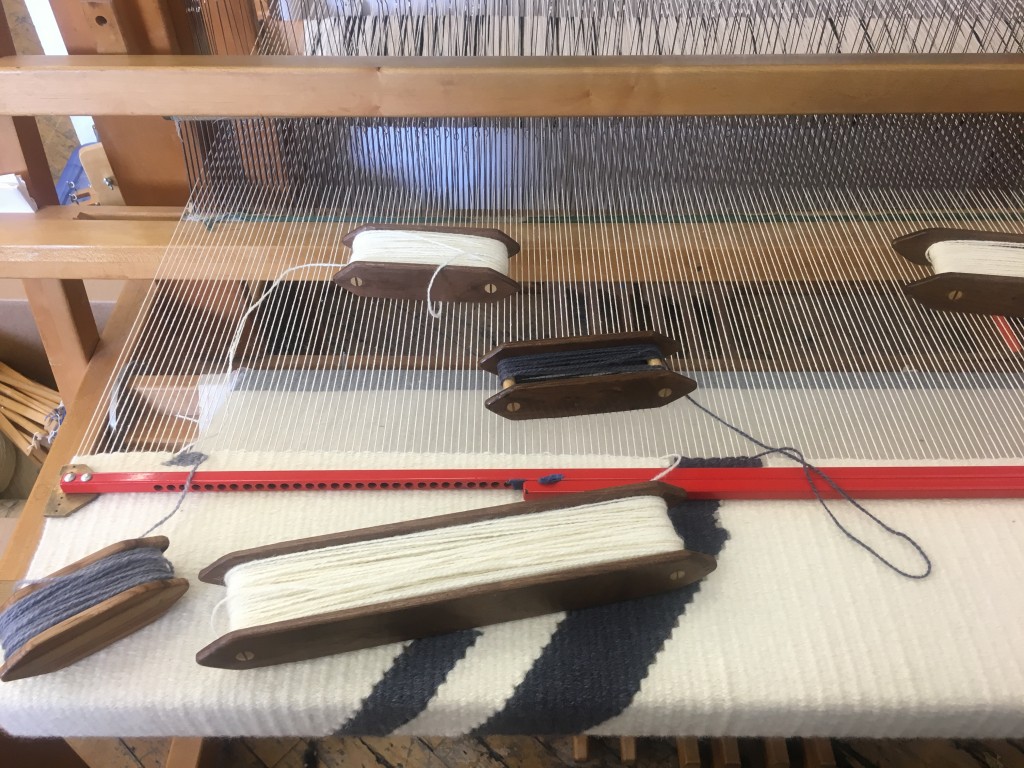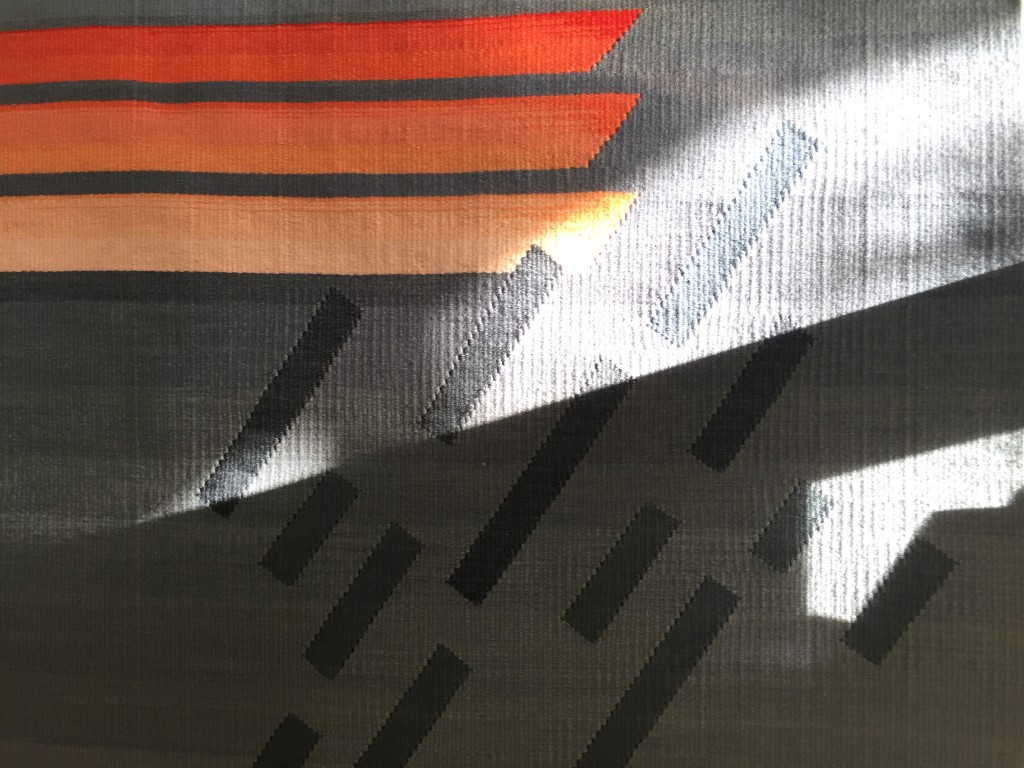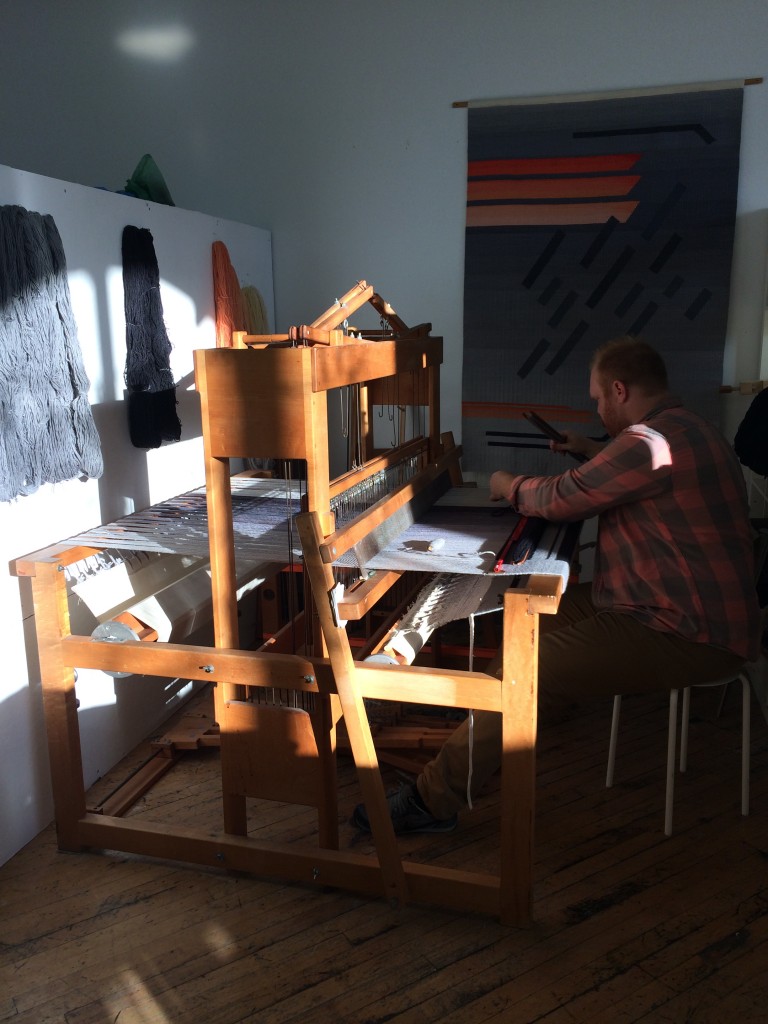AIR Artist Highlight: Andrew Boos
Andrew Boos, one of TAC AIR cycle 8 residents, has spent the last 9 months creating beautiful and monumental tapestry weavings. The content of his work looks to the future as a way to improve the present. He seeks to radically shift the focus from altering the status quo to establishing a new set of guiding principles. During his time at TAC, he has experimented with new dyeing and block printing techniques, challenged his concepts, and built a giant loom from scratch. I had the pleasure of talking to Andrew about his influences and how he would like to see his work.
On his creative background:
"I started college just focusing on Art History, mainly ancient art and archaeology. I worked as a research assistant on numerous excavations and architectural preservation projects in Israel and Greece and worked a lot with masonry and sculpting techniques. I took a printmaking course as one of the requirements and then just continued taking more and more art courses until eventually I added it as a double major. I focused primarily on printmaking and got very interested in the use of color."
"I was always interested in different forms of folk art, especially ceramics and rugs. After I finished school I continued to work in prints and paintings for a while but I just had the desire to try something new and started looking into weaving. I built a frame loom in my apartment and after weaving my first lopsided rug, started looking for a class to learn the techniques. I found a class at a yarn shop in Minneapolis called Depth of Field taught by Barbara Heath. It was a project based class where everyone worked at their own pace."
"My grandma is a quilter. My baby blankets were all made by her and we had several other quilts. I have one that she made for my mom when she went to college and one she gave me as a high school graduation present. I remember when I was young, she took one of the quilts to patch it up and add new pieces where it had worn away. I was so amazed that a ripped blanket could be fixed like that."
On a normal work day:
"I let my mood dictate what I do in the studio. I love that weaving involves so much prep work because if i'm not in the mood to weave, I can go into the studio and tie up skeins for dyeing. Most people hate dressing their loom when they first start weaving, but eventually you learn to enjoy it as a part of the process or as an excuse for procrastinating while still being productive. When I sit down to weave, I like listening to podcasts or music to help me filter out what's going on around me and just focus on what's in front of me."
"My dream studio would be big. It would have large windows to let in the natural light and have separate areas for dyeing, prep, and weaving. It would also just be me, so I don't have to listen to headphones and can play music as loud as I want."
On his impact:
"The content of my work looks to the future as a way to improve the present. It is not reactionary to what we experience today, but seeks to radically shift the focus from altering the status quo to establishing a new set of guiding principles. I'm not interested in expressing this literally, but through a representational aesthetic that can become integrated into our everyday lives. Some work can exist on a personal level in someone's home as an object they view and interact with daily. Other work I make to be more monumental and impactful, as a statement made out loud."
On his experience at TAC:
"No one understands a weaver like another weaver. It is amazing to be around a community of people who understand my practice and can offer critiques based on that knowledge. Before the residency I was producing work in a bubble, growing more and more comfortable in my established practice. The community at TAC has offered me so many ways to challenge my own comfort zone, although I may have resisted some of them."
On his work:
"I work primarily with wool because the dyeing process is so simple and the wool absorbs the color so well. While recently I have experimented with natural dyes, I mainly use acid dyes because I can control the gradient and hues more easily. While the dyeing process is methodical and technical, I allowed the weaving process to be much more organic. I plan out basic shapes and compositions in my head before starting, sometimes taking months to think about a single work. When I weave, I let the lines and shapes dictate how my plan needs to change. Since on a loom you can only see a portion of the whole at any point, I base my compositions on how each section relates to the one before and the one after. I also let the amount of yarn dictate the patterns. Instead of planning exactly how much I need of any one color, I dye a set amount and change my composition when I run out."
On what influences his work:
"I'm really inspired by architecture and the way it can act as both environment and sculpture. Mid-century brutalist concrete buildings, and their interiors, light artists like James Turrel, and conceptual artists like Jeane-Claude and Christo who use architecture as a basis for their installations. I look to art that can be both monumental and personal simultaneously."
All photos by Sam Crow
Check out the video below to see Andrew in action!






